Innovation in Tropical Forest Conservation: Q&A with Dr. Diogo Veríssimo

Curious common marmosets in Northeastern Brazil. Photo by: Diogo Veríssimo.
In the Biblical tale of David and Goliath, David, the underdog, uses his wit and cunning to overcome the brute force of the giant Goliath, ultimately declaring victory. Just last year, the immensely popular pop-science and psychology writer Malcom Gladwell’s released the book: David and Goliath: Underdogs, Misfits, and the Art of Battling Giants, which became his fifth best selling book to deal with, among other things, the art of marketing. This particular book speaks to the advantage that perceived “underdogs” have in a fight, but the overall popularity of Gladwell’s books also underlines the importance of good marketing in getting people “on board” for making changes.
As a whole, conservationists, the veritable underdogs in both science and pop-culture, have been slow to adapt the strategies of marketing or to market conservation at all. Dr. Diogo Veríssimo, a researcher who works at the interface between social and natural sciences, with a focus on behavior change and evidence-based conservation, thinks this needs to change.
“Commercial marketers have for over a century used the latest developments in academic disciplines such as psychology, sociology and economics to influence the purchasing behavior of consumers worldwide.” Veríssimo told mongabay.com. “These efforts have generated a vast amount of knowledge about human behavior and how to influence it…In contrast, the conservation field has lagged behind in the adoption of these techniques.”
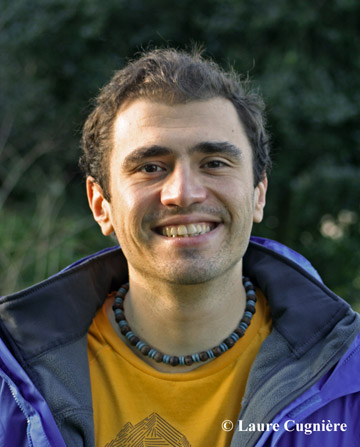 Diogo Veríssimo. Photo by: Laurie Cugnie. |
This lag, Veríssimo says, “is perhaps due to the bad image that marketing has in many academic and practitioner circles, where there is often the notion that if you are doing something that is a moral imperative then there is no need to market it, as people should already by default been doing it. In reality things are much more complex, as there are huge differences in core values between different groups of people. For a group such as those people working in nature conservation, not eating blue fin tuna might be the only logical thing to do, but for someone that does not share the value of the existence of blue fin tuna as a species for whatever reason this may not make any sense at all.”
Veríssimo notes that marketing could be a hugely powerful tool in convincing people to change their behavior to safeguard biodiversity and nature in general.
“With the understanding that human behavior is the main driver of all threats to biodiversity comes the realization that we need to be able to influence how people act…I believe the next big thing for forest conservation will be the adoption of principles developed in the commercial marketing sector by conservationists to influence the lifestyles of people worldwide and thus mitigate threats to biodiversity.”
Diogo Veríssimo is currently a David H. Smith Conservation Fellow researching the impact of conservation programs that aiming to change behavior, and the application of social return on investment metrics. His work has taken him beyond his native Portugal to Brazil, India, São Tomé and Príncipe, Costa Rica and Sri Lanka where he has worked on environmental education, social marketing, community-based conservation, and natural resource management. Diogo also writes regularly in the popular press and manages a biodiversity-related social media platform with more than 22,000 followers.
“In order to ensure the existence of tropical forests we needed to shift our focus towards understanding people,” Veríssimo says. “Human behavior is the driver of all main threats to biodiversity and it is only by managing and influencing it that we can hope to conserve nature.”
An Interview with Dr. Diogo Veríssimo
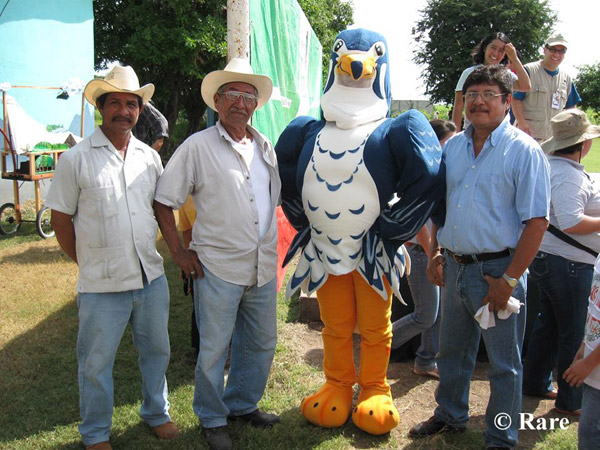
Social marketing campaign in Mexico by Rare Pride. Photo courtesy of: Diogo Veríssimo.
Mongabay: What is your background? How long have you worked in tropical forest conservation and in what geographies? What is your area of focus?
Diogo Veríssimo: I started the way I imagine most people working in biodiversity conservation do: driven by an endless passion for the natural world. It was really a no brainer for me to pursue a degree in Environmental Biology. But while at University, my understanding of biodiversity conservation changed drastically. I had the chance to witness and be part of conservation efforts not only in my native Portugal but also in places like Uganda, Sri Lanka, and Mexico. Those experiences made it clear to me that in order to ensure the existence of tropical forests we needed to shift our focus towards understanding people. Human behavior is the driver of all main threats to biodiversity and it is only by managing and influencing it that we can hope to conserve nature. With this realization, my interests gradually shifted towards the social sciences, namely environmental economics and social marketing. I have since worked mostly around behavior change, conservation education, and community-based conservation.
My connection to tropical forests started more than 10 years ago during one of those experiences of “real world conservation” I had during my undergraduate degree: I was given the chance to take part in a summer course in “Tropical Ecology and Conservation” run by the Tropical Biology Association (TBA) in Uganda, East Africa. This is a great experience and with the mix of European and African participants it is a great chance to meet scientists with a variety of backgrounds.
In spite of having this first experience in East Africa, most of my work around tropical ecosystems has been in Central and South America. However, I have recently come almost full circle, as my biggest effort around tropical ecosystems currently relates to a project in West Africa.
Mongabay: Are you personally involved in any projects or research that represent emerging innovation in tropical forest conservation?
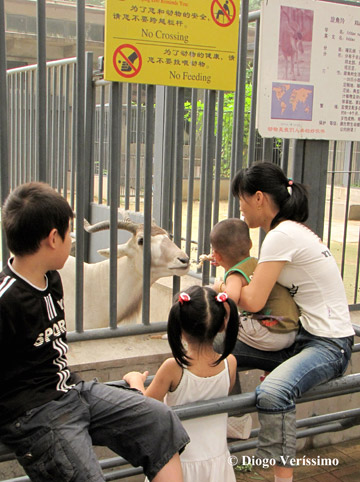 Beijing Zoo in China. Information is rarely enough to change behavior. Photo by: Diogo Veríssimo. |
Diogo Veríssimo: My most recent project focuses on improving logging practices in the archipelago of São Tomé and Príncipe, in the Gulf of Guinea, West Africa. The biodiversity of these endemic-rich islands is threatened by a fast-growing demand for natural resources such as timber, stemming from a strong growth in human population. Logging, most of which is illegal, has been a key driver of environmental degradation and is starting to encroach on the country’s protected areas. It is therefore urgent to gain a better understand of this industry and find ways of making it more sustainable.
Our objective is two-fold: to ensure the conservation of the several endemic tree species of São Tomé and guarantee the long-term availability of a commercially viable stock of high quality timber species. However, before it is possible to develop a strategy for sustainable logging in São Tomé we need to characterize legal and illegal logging activities, gain a better understanding of the timber market and consumer preferences for different tree species, and finally improve governance of forests in São Tomé. Our work is currently being financed by a Conservation Leadership Program Future Conservation Award with matched funding from the Forests Directorate and the local NGO Monte Pico.
This project is innovative because it has a strong human dimensions component, looking beyond traditional forestry approaches. At the same time, because it has grown from the understanding that managing this pool of natural resources is crucial, we were able to involve not only civil society from the project design stage but also the logging industry and the government. We have also included a strong capacity building component that extends way beyond those few professionals involved in the project. This is crucial to ensure that the project leaves a legacy not only in terms of knowledge production but also in improving the human resources available for future conservation action. Just last July, I was involved in giving a one-week course on the use of social science methods in biodiversity conservation which gathered 17 local conservation practitioners from both government and NGOs.
Mongabay: What’s the next big thing in forest conservation? What approaches or ideas are emerging or have recently emerged? What will be the catalyst for the next big breakthrough?

Oil palm plantation in Sao Tome and Principe in West Africa. Photo by: Diogo Veríssimo.
Diogo Veríssimo: With the understanding that human behavior is the main driver of all threats to biodiversity comes the realization that we need to be able to influence how people act. Bearing this in mind, I believe the next big thing for forest conservation will be the adoption of principles developed in the commercial marketing sector by conservationists to influence the lifestyles of people worldwide and thus mitigate threats to biodiversity.
Commercial marketers have for over a century used the latest developments in academic disciplines such as psychology, sociology, and economics to influence the purchasing behavior of consumers worldwide. These efforts have generated a vast amount of knowledge about human behavior and how to influence it. It has only been in the last few decades however that professionals outside the business sector have started to tap into this wealth of knowledge. The health sector has been particularly pioneering, forming the core of the new field of social marketing which seeks to apply marketing principles and techniques to influence target audience behaviors that benefit society as well as the target audience. In contrast, the conservation field has lagged behind in the adoption of these techniques. The exceptions are NGOs such as Rare that have in the last decades been expanding the application of social marketing principles to a variety of biodiversity-related issues in places like China, Indonesia and Latin America.
The reason for this delay is perhaps due to the bad image that marketing has in many academic and practitioner circles, where there is often the notion that if you are doing something that is a moral imperative then there is no need to market it, as people should already by default been doing it. In reality things are much more complex, as there are huge differences in core values between different groups of people. For a group such as those people working in nature conservation, not eating blue fin tuna might be the only logical thing to do, but for someone that does not share the value of the existence of blue fin tuna as a species for whatever reason this may not make any sense at all. There are nonetheless encouraging signs such as the recent push for the formation of a working group on Conservation Marketing and Engagement, within the Society for Conservation Biology, the biggest professional association in the conservation field.
Mongabay: What do you see as the biggest development or developments over the past decade in tropical forest conservation?
Diogo Veríssimo: Undoubtedly the move from a purely biological approach to tropical forest conservation to a more holistic approach where the human dimensions of managing biodiversity is also taken into account. A lot of time is spent focusing on studying the biology and ecology of tropical ecosystems but in many ways we already have the critical information we need to make decisions. It is in the human dimensions of biodiversity conservation that the critical gaps in knowledge remain. This change in focus can be seen in the move from what was initially called “conservation biology” to what is increasingly known as “conservation science.” Today we know that to conserve forests in the tropics we need to understand economic cycles and the impact of global trade agreements, for example, as much as we need to know about pollination or seed dispersal.
This transition is of course by no means universal. Although the buzzword “interdisciplinary” is widely used, I often find that any research that bridges marginally different topics is labelled interdisciplinary. Paradoxically, while it is for example common to regard different aspects of ecology as separate fields, it is also common to lump the social sciences into one bundle of people-themed science, disregarding the fact that within this label we can find fields as different as psychology, economics, sociology, anthropology or political science. So while much has been achieved in integrating the social sciences in conservation science (especially if compared with the humanities for example) much more remains to be done.
Mongabay: What isn’t working in conservation but is still receiving unwarranted levels of support

Río Huaypetue gold mine in Peru as seen from the air. Changing human behavior is key to tackling environmental problems. Photo by: Rhett A. Butler.
Diogo Veríssimo: I think one aspect of conservation that we need to overhaul is the way we do outreach. Although there is now a somewhat prevalent notion amongst conservation practitioners that doing outreach is an important component of a conservation project, often what is implemented is a series of disjointed activities that evidence a lack of rigour that would not be acceptable in other aspects of a project. While much of this relates to the low priority that outreach still receives when it comes to funding for example, other aspects are certainly possible to improve with a change of mindset.
One example of this is how conservation projects often report their outreach methods as if they were in fact results. For example, it is common to read in project reports that X number of posters were put up or Y number of schools visited. This is in reality only the method through which the outreach was done and does not say anything about the impacts of those activities (e.g. change behavior). This would be akin to an ecologist reporting the number of transects or surveys done in a given area but neglecting to report what species or how many individuals were actually found!
Another example is the overemphasis on targeting children in outreach projects. For most conservation issues children are not a key target audience as they will not be involved in decision-making for many years. Although few practitioners would admit this, children are often targeted because they are, through the school-system, effectively a captive audience that allows for large numbers of people to be targeted at a lower cost. Furthermore, the prevalent assumption that children will pass on the knowledge and impact the behavior of their parents is in reality only weakly supported, if at all. Certainly, children can be an important target audience for some specific conservation issues in some areas but not as widely as the focus of current conservation outreach practices would make us believe.
One last aspect that I believe also needs to be revised is the excessive focus on awareness as the main goal of conservation outreach, which is based on the assumption that providing knowledge is enough to change behavior. In the vast majority of the situations, we know from studies in marketing and psychology for example, that this is simply not the case. Conservationists need to focus more on influencing actual behavior as it is this that has real world implications. This is of course no easy task. Even in the business sector where some of the most brilliant practitioners work with some of the world’s largest budgets, failure is not uncommon (although businesses are much better than conservationists at embracing failure and using it to improve future practices). But the scale of this challenge is exactly why we need to engage as many social scientists as possible in conservation efforts: if we are the root of the problem we can certainly also be the key to the solution.
Related articles
Next big idea in forest conservation? DNA fingerprinting trees to stem illegal logging
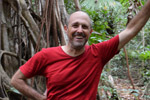
(08/21/2014) As a professor at Texas Tech, Dr. Chuck Cannon has been, among other things, working to create a system of DNA fingerprinting for tropical trees to undercut the global illegal logging trade. ‘If we just enforced existing laws and management policies, things would be pretty good, but unfortunately, that is where things fall apart in many tropical countries,’ Cannon said.
Next big idea in forest conservation: Reconnecting faith and forests

(07/24/2014) ‘In Africa, you can come across Kaya forests of coastal Kenya, customary forests in Uganda, sacred forest groves in Benin, dragon forests in The Gambia or church forests in Ethiopia…You can also come across similar forest patches in South and Southeast Asia including numerous sacred groves in India well-known for their role in conservation of biological diversity,’ Dr. Shonil Bhagwat told mongabay.com.
Next big idea in forest conservation? Rewards for reforestation
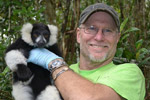
(07/10/2014) Susie McGuire and Dr. Edward Louis Jr. are the powerhouse team behind the Madagascar Biodiversity Partnership (MBP), an NGO that involves local residents—both human and primate—in reforestation efforts in Madagascar. A conservation geneticist and veterinarian by training, Ed Louis has discovered 21 lemur species and successfully reintroduced two species of locally extinct lemurs back into the wild.
Next big idea in forest conservation? The ‘double-edged sword’ of democracy
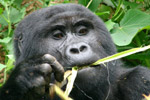
(07/03/2014) Dr. Douglas Sheil considers himself an ecologist, but his research includes both conservation and management of tropical forests. Currently teaching at the Norwegian University of Life Sciences (NMBU) Sheil has authored and co-authored over 200 publications including scholarly articles, books, and popular articles on the subject.
Ecotopia emerging: sustainable forests and healthy livelihoods go hand in hand

(06/26/2014) Callenbach’s 1975 utopian novel Ecotopia became wildly popular among environmental-leaning folks, hippies, and progressive thinkers of the day. Set in 1999, the novel took place twenty years after Oregon, Washington and northern California seceded from the union to form an imperfect, in-process sustainable nation. For a book that has fallen mostly off the radar, certain aspects of Ecotopian society fall remarkably in line with research of Arun Agrawal, a professor of political science at the University of Michigan.